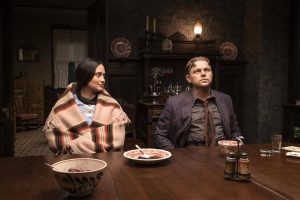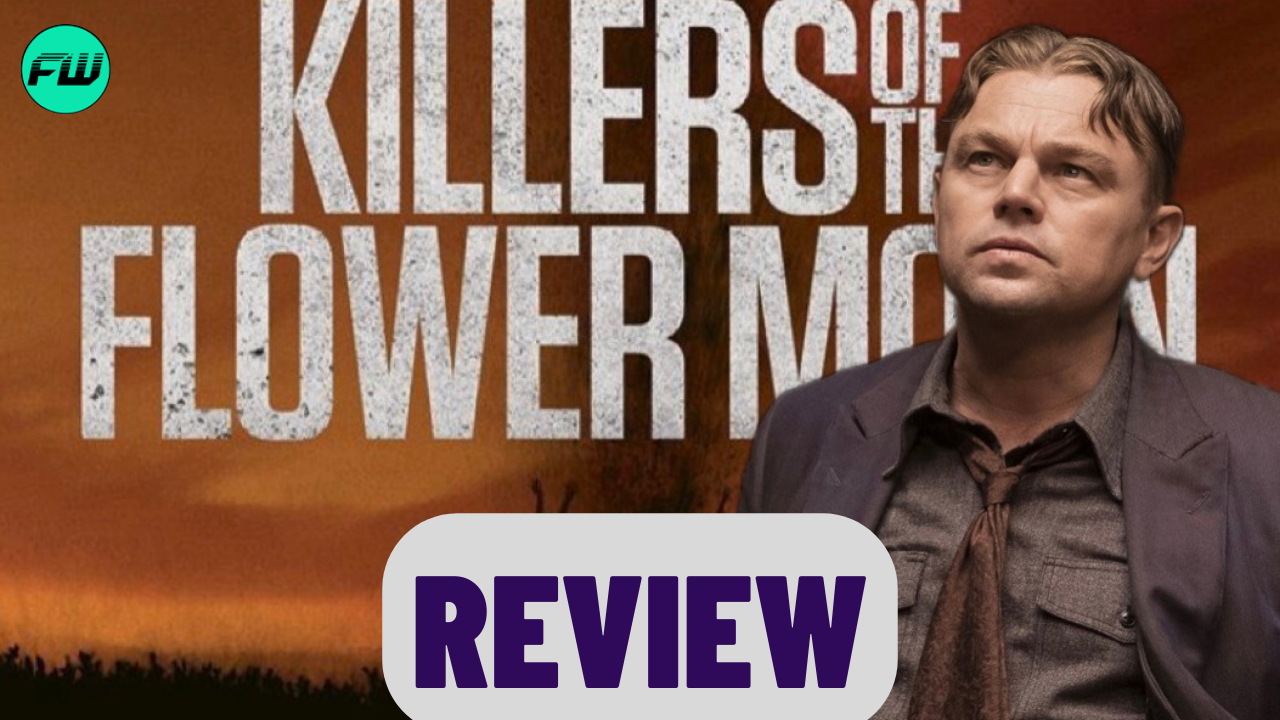Killers of the Flower Moon receives a wide theatrical release October 20, 2023.
Martin Scorsese is one of the most acclaimed masters in the history of cinema. The number of timeless classics in his filmography is such that he could “lend” a few to several incredibly successful, popular filmmakers of today, and his career would still stand as one of the most fascinating ever. Inevitably, the industry has evolved – for better and for worse – and has turned into an endless rollercoaster of franchises and cinematic universes, often putting Scorsese in the eye of the storm, i.e. discourses about the state of contemporary cinema.
Sometimes provoked with deliberately controversial questions regardless of the answer, other times letting slip some opinion that contradicts what he has managed and still manages to do with his voice, but the truth is, in the end, Killers of the Flower Moon will bring any cinephile to the big screen on the opening weekend. The epic length always leaves some viewers apprehensive and insecure, but it’s hard to miss a Scorsese movie, with Eric Roth (Dune) as co-writer, and a phenomenal cast led by Leonardo DiCaprio (The Wolf of Wall Street), Robert De Niro (The Irishman), and the now-star, Lily Gladstone (First Cow).
Killers of the Flower Moon Critique

Also Read: Taylor Swift: The Eras Tour Review
Killers of the Flower Moon is based on the book of the same name written by David Grann, which focuses on the murders in the Osage Nation during the 1920s, committed after oil was discovered on tribal lands. It’s (another) dark chapter in the history of America portrayed on the big screen and, in retrospect, someone like Scorsese was indeed necessary to handle the sensitive themes of this narrative, as well as the level of detail and genuine care in sharing the story in a respectful, appropriately important manner rather than turning it into cheap entertainment.
The performances carry the narrative weight of Killers of the Flower Moon and are nothing short of extraordinary. DiCaprio – in his fifth collaboration with Scorsese – delivers an intriguingly complex portrayal of Ernest Burkhart, a man morally torn between his loyalties to the Osage community and the shameful secrets of his own family. De Niro, as William King Hale, captivatingly embodies the corrupt, ruthless antagonist, but with a strange magnetism that makes the character even more chilling. It’s definitely his best performance in years.
However, it’s Gladstone’s mesmerizing, emotionally devastating performance as Mollie, a member of the Osage Nation, who steals the spotlight. An authentic, unforgettable display with tremendous depth, making her character the emotional pillar of Killers of the Flower Moon. The actress holds a powerful screen presence, conveying with eerie subtlety the pain, resilience, and perseverance of her character.
The film thoroughly examines its themes of greed, corruption, and lust for power, providing incisive commentary on the darker aspects of human nature. Scorsese skillfully uses his white protagonists, demonstrating how these vicious sins can lead to the exploitation of vulnerable communities, using the real Osage murders as a haunting backdrop. Killers of the Flower Moon doesn’t shy away from visually depicting the historical injustices suffered by the native people, bringing to the table a part of America’s long-forgotten history. As the story unfolds, the audience is forced to confront uncomfortable truths about the extremes people are willing to go to in the relentless pursuit of wealth and power.
Technically, as expected, Killers of the Flower Moon excels in all departments, but the editing stands out as a true marvel. Thelma Schoonmaker’s work – another master of her craft – is simply brilliant. Undoubtedly, the most unpredictable element of the movie, seamlessly transitioning from quiet conversations or contemplative scenes to shocking moments with brutal imagery. Schoonmaker’s editing choices create a sense of unease and suspense, helping to keep the audience engaged no matter how much time remains.
Killers of the Flower Moon successfully contrasts the serene beauty of the Osage landscape with the violence of the crimes committed against its people, thanks in large part to Schoonmaker’s dexterity. But there’s more: both Rodrigo Prieto’s cinematography and Robbie Robertson’s score – two more of Scorsese’s longtime collaborators – also help carry the narrative’s weight. The composition of each scene, the perfect framing, the sublime camera movement… Prieto navigates the various storylines with impressive finesse.
Robertson’s background music contributes to setting the tone of Killers of the Flower Moon. Immersive and evocative, it plays a crucial role in gripping the audience in the era’s atmosphere and the emotional turmoil of the characters. All other technical aspects are exceptional. Production, set, costume design… all the teams involved in this project work together harmoniously to transport the audience to the respective decade. The attention to detail in recreating the historical environment is remarkable. Scorsese’s commitment to authenticity is evident and considerably enhances overall immersion in the story.

One of the most powerful characteristics of Killers of the Flower Moon is, without a doubt, its ending, which invites essential reflection. Scorsese’s conclusion is a thought-provoking commentary on the modern era of media and entertainment. The final sequence serves as a poignant reminder of how society has become desensitized to real-life tragedies, consuming them as if they were mere spectacles with fun sound effects and quirky jazz bands. It’s a shocking yet moving ending that highlights the importance of remembering the impactful moments in human history, whether positive or dark, which often get lost amid fast-food entertainment.
It doesn’t personally affect me, but I can’t help but commend the proud use of the Osage native language throughout Killers of the Flower Moon. The inclusion of this language adds verisimilitude to the narrative, demonstrating a devotion to accurately representing the culture and history of the respective people. It’s a commendable creative decision that’s unfortunately becoming increasingly rare in Hollywood, which repeatedly ignores the impact of cinematic cultural richness.
Although Killers of the Flower Moon can be described as one of the best films of the year, some details prevent it from being a complete masterpiece. The main story, despite all of the technical expertise and thematic depth, is quite straightforward for its 206-minute runtime. There are no major surprises or unexpected twists, as the narrative follows a relatively predictable path. The weight of the more than three hours of duration is mainly felt in the first hour and a half, where the introduction and development of the core relationships take up a lot of screen time. The deliberately slow pace will test the patience of those seeking immediate excitement, but those who enter a Scorsese movie hoping for something like that, fall into the group of viewers with nonsensical, unrealistic expectations.
Personally, the lack of a stronger emotional connection with the central love relationship, and even with many of the characters, makes Killers of the Flower Moon more difficult to settle into. During the first half of the film, I felt the need to make an effort to remain engaged, patiently waiting for more compelling reasons to get closer to the protagonists, especially Mollie. Perhaps it’s an issue that will be resolved upon repeat viewings, but for now, it’s a tough pill to swallow.
In Conclusion
Killers of the Flower Moon is a remarkable cinematic feat by the master Martin Scorsese, with exceptional contributions from Leonardo DiCaprio and Robert De Niro, as well as a striking, breakthrough performance by Lily Gladstone. It unveils a harrowing narrative that prompts deep, poignant reflection on the past and present. Technically, all departments shine, but Thelma Schoonmaker’s editing is simply flawless. The commitment to authenticity and the use of the Osage language are commendable additional traits. The final sequence is one of the most powerful conclusions in recent years, a memorable, thought-provoking commentary on the desensitization of modern entertainment. A must-watch!
8/10
Follow us for more entertainment coverage on Facebook, Twitter, Instagram, and YouTube.


